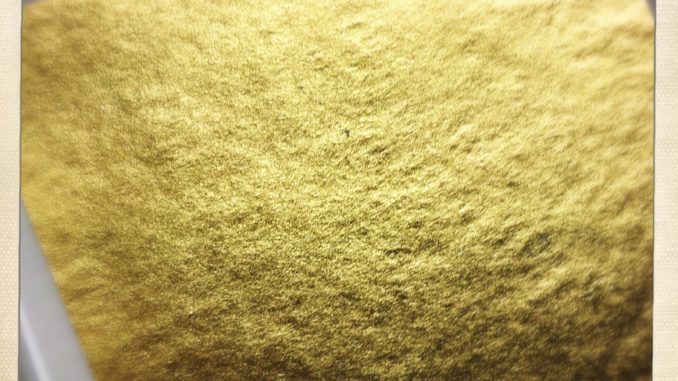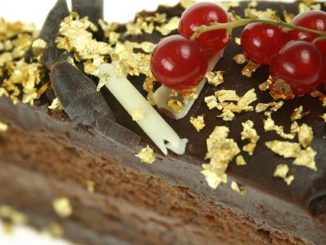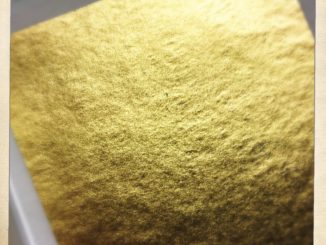
Pure gold is an element, not an alloy, or for that matter, a compound. What that means is, gold can be compressed to any extent, even to an atomic level, without it ever losing its structure. Indeed, gold can be beaten down repeatedly till it becomes so thin that it even becomes transparent, allowing sunlight to pass through.
Making Gold Leaf
Making the gold leaf is the process of hammering gold repeatedly, till it becomes really quite thin. Gold leafing is a highly labor intensive process. In an earlier era, craftsmen used to spend several days working on a single sheet of a gold leaf. Today, metal rollers are used which can compress gold to minute thickness and do so much faster.
A Gold leaf starts off as a bar of gold, which is rolled again and again till it becomes a thin as 1/1000th of an inch. But the process doesn’t stop there. The gold is placed between pieces of parchment or between leather straps, and the hammering is resumed. Keep doing so for a day, and the gold will be as thin as 1/250,000th of an inch! This is as thin as it gets.
Then, the gold leaf is cut into small sheets, and placed between glassine paper layers. Glassine paper is important to gold leafing because the gold leaf doesn’t stick to it, and can be easily peeled off. Gold leafs are sold in the market either as a large sheet or as several layers separated by glassine paper. There are special combs and brushes that are used to extricate the gold leaf from the glassine paper safely to an application.
The key to gold leafing is to have a plenty of patience. It’s not an easy thing to do as it required a gilder to exercise high levels of concentration while performing the same task repetitively, several hundred times a day. A break in focus can lay to waste an entire day’s effort.
The Different Applications of Gold Leafing
Gold Leafing has had several applications since ages, because it adds a touch of class and beauty to a product. Some of the great applications are:
- Gold Leafing For Books:
To make a precious book truly special, people add gold leafing to the edges of the pages. Not only does the book look really attractive, the gold leafing protects the it against the ravages of time. Usually, gold leafing is applied to the Bible or the Quran, or other important books. - Gold Leafing For Furniture:
Gold leafing is a great way to make great furniture – tables or chairs – look significantly more attractive, not to mention, expensive. Even the application of the thinnest layer of the gold leaf changes the furniture entirely. - Gold Leafing For Frames:
Gold leafing may be applied to frames of really expensive paintings or vintage mirrors. This looks far better than giving a metallic-gold finish. - Gold Leafing For Molding:
Gold leafing can be used to enhance a molding, accentuate the beauty, make it look really special. The only issue with this is, the process can be quite expensive. - Gold Leafing For Special Buildings:
The magnificent Colorado State Capitol Building dome has been built completely with gold leafing. It’s quite a sight to look at and is already quite a tourist attraction. Many governments or rich organizations are looking at making their buildings special by using gold leafing. - Gold Leafing To Decorate Jewellery:
One of the most popular applications of gold leaf is to decorate jewellery. We discuss this in greater detail next.
How Gold Leafing Can Be Used To Decorate Jewellery
A variety of jewellery can be made to look really precious by applying gold leafing. We explain how to do this through a quick and easy guide.
- Gently clean the jewellery on which you wish to apply gold leafing with a detergent.
- Sand the jewellery till its surface is matte, so that the gold leaf easily attaches to it.
- Apply adhesive with a tiny paintbrush on the surface you want the gold leafing to be done.
- The surface should only be partially sticky, so allow it to dry.
- Remove the gold leaf from the glassine papers, and roll it on a small stick.
- Apply the gold leaf with the help of the tiny brush.
- Varnish the area where the gold leafing has been applied.
That’s it. A quick 7-step process to decorate any jewellery with gold leafing.




Be the first to comment